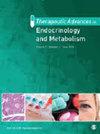Exploring the weight bias of professionals working in the field of obesity with a mobile IAT: a pilot study
IF 3.9
3区 医学
Q2 ENDOCRINOLOGY & METABOLISM
Therapeutic Advances in Endocrinology and Metabolism
Pub Date : 2022-01-01
DOI:10.1177/20420188221098881
引用次数: 2
Abstract
Background: Obesity is common in many industrialized nations and often accompanied by related health issues. Furthermore, individuals living with overweight or obesity are often confronted with stigmatization in their daily lives. These problems may be aggravated if the objectivity of health care professionals is compromised due to (unconscious) prejudices. If pharmaceutical companies, regulatory agencies, and health insurers are also susceptible to these biases, decisions related to the development, approval, and reimbursement of obesity-related therapies may be negatively impacted. Materials and Methods: The ‘Implicit Association Test’ (IAT) is a psychometric test allowing to measure these attitudes and could therefore assist to reveal unconscious preferences. A self-developed mobile version, in the form of a ResearchKit-based IAT app was employed in the presented study. The objective was to determine (potential) weight bias and its characteristics for professionals attending a national obesity-related conference in Germany (G1), compared to a control group (without stated interest in the topic, G2) – both using the mobile app – and a historical control (G3) based on data provided by Project Implicit acquired by a web app. Results: Explicit evaluations of G1 were neutral at a higher percentage compared with G2 and G3, while implicit preference toward lean individuals did not differ significantly between G2 and G3, and G1. Conclusion: The greater discrepancy between the (more neutral) explicit attitude and the unconscious preference pointing in the anti-obesity direction could indicate an underestimated bias for the professional participants in G1. Implicit preference is often ingrained from childhood on, and difficult to overcome. Thus, even for professionals, it may unconsciously influence decisions made in the care they provide. Professionals in any given health care sector directed at obesity care should thus be made aware of this inconsistency to enable them to consciously counteract this potential effect.用移动IAT探索肥胖领域专业人员的体重偏差:一项试点研究
背景:肥胖在许多工业化国家很常见,并且经常伴随着相关的健康问题。此外,超重或肥胖的人在日常生活中经常面临耻辱。如果卫生保健专业人员的客观性由于(无意识的)偏见而受到损害,这些问题可能会加剧。如果制药公司、监管机构和健康保险公司也容易受到这些偏见的影响,那么与肥胖相关疗法的开发、批准和报销相关的决策可能会受到负面影响。材料和方法:“内隐联想测试”(IAT)是一种心理测量测试,可以测量这些态度,因此可以帮助揭示无意识的偏好。在本研究中采用了基于researchkit的IAT应用程序形式的自主开发的移动版本。目的是确定(潜在的)体重偏差及其特征,以参加德国全国肥胖相关会议(G1)的专业人士为对象,与对照组(没有明确表示对该主题感兴趣,G2)(都使用移动应用程序)和历史对照组(G3)(基于Project Implicit提供的数据,通过web应用程序获取)进行比较。结果:与G2和G3相比,G1的外显评价中中性的比例更高,而G2和G3以及G1对瘦个体的内隐偏好没有显著差异。结论:G1期专业被试的外显态度(更中性)与指向反肥胖方向的无意识偏好之间存在较大差异,表明其存在被低估的偏见。隐性偏好往往从小就根深蒂固,很难克服。因此,即使是专业人士,它也可能无意识地影响他们在提供护理时做出的决定。因此,应该让任何专门从事肥胖护理的卫生保健部门的专业人员意识到这种不一致,使他们能够有意识地抵消这种潜在影响。
本文章由计算机程序翻译,如有差异,请以英文原文为准。
求助全文
约1分钟内获得全文
求助全文
来源期刊

Therapeutic Advances in Endocrinology and Metabolism
Medicine-Endocrinology, Diabetes and Metabolism
CiteScore
7.70
自引率
2.60%
发文量
42
审稿时长
8 weeks
期刊介绍:
Therapeutic Advances in Endocrinology and Metabolism delivers the highest quality peer-reviewed articles, reviews, and scholarly comment on pioneering efforts and innovative studies across all areas of endocrinology and metabolism.
 求助内容:
求助内容: 应助结果提醒方式:
应助结果提醒方式:


